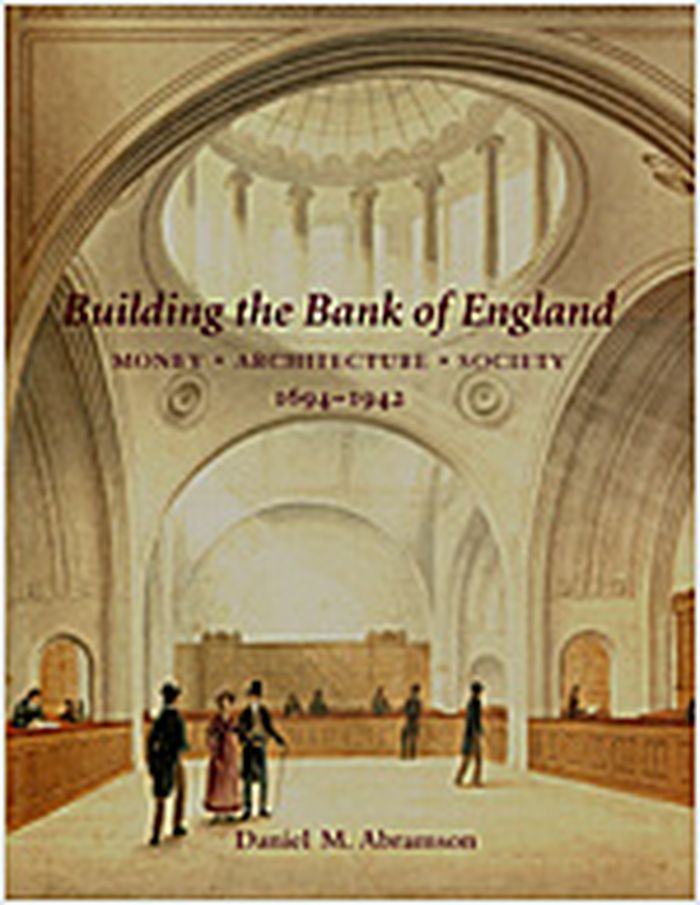$118.95
(available to order)
Summary:
The Bank of England symbolizes the economic strength, influence, and potency of Britain. Founded in 1694, its world-famous buildings were built and rebuilt four times by different architects, most notably Sir John Soane. The Bank’s three-and-a-quarter-acre complex has included elegant public banking halls and private offices, courtyards and gardens, warehouses and vaults,(...)
History until 1900
January 1900, New Haven and London
Building the bank of England : money, architecture, society 1694-1942
Actions:
Price:
$118.95
(available to order)
Summary:
The Bank of England symbolizes the economic strength, influence, and potency of Britain. Founded in 1694, its world-famous buildings were built and rebuilt four times by different architects, most notably Sir John Soane. The Bank’s three-and-a-quarter-acre complex has included elegant public banking halls and private offices, courtyards and gardens, warehouses and vaults, residential apartments and guards’ barracks. This illustrated book examines for the first time the entire architectural history of the Bank from the seventeenth through the twentieth centuries. Drawing on a variety of perspectives, the book relates the history of the Bank of England to current debates on English economic, social, and urban history, including issues of national identity, mercantile politics, and the commercialization of culture. The book also shows how the building itself has expressed various historical tensions among the Bank’s inhabitants and publics: its directors and detractors, its clerks and clientele, its tourists, and even its mob attackers.
History until 1900
books
$77.00
(available to order)
Summary:
"Skyscraper Rivals" is the first book to examine the architecture of Wall Street between the wars through an array contemporary and archival images and an informed discussion of the financial, geographical, and historical forces that shaped this district. The book (...)
Skyscraper rivals : the AIG building and the architecture of Wall Street
Actions:
Price:
$77.00
(available to order)
Summary:
"Skyscraper Rivals" is the first book to examine the architecture of Wall Street between the wars through an array contemporary and archival images and an informed discussion of the financial, geographical, and historical forces that shaped this district. The book focuses on the AIG Building--once known as the Cities Service Building--and three other major towers in the financial district, in their race to be the tallest, the most modern, and the most lavish. We meet the tycoons who paid for these structures, the architects who designed them, the workers who laboured in them, and the artists and photographers who portrayed them. The economics of skyscraper construction and the real-estate market of Wall Street are explained; also included are illuminating details and anecdotes surrounding each building's history.
books
December 2000, New York
Gratte-ciels
$38.00
(available to order)
Summary:
In this title, Daniel M. Abramson investigates this notion of architectural expendability and the logic by which buildings lose their value and utility. The idea that the new necessarily outperforms and makes superfluous the old, Abramson argues, helps people come to terms with modernity and capitalism’s fast-paced change. 'Obsolescence', then, gives an unsettling(...)
Obsolescence: an architectural history
Actions:
Price:
$38.00
(available to order)
Summary:
In this title, Daniel M. Abramson investigates this notion of architectural expendability and the logic by which buildings lose their value and utility. The idea that the new necessarily outperforms and makes superfluous the old, Abramson argues, helps people come to terms with modernity and capitalism’s fast-paced change. 'Obsolescence', then, gives an unsettling experience purpose and meaning.
Architectural Theory
$50.00
(available to order)
Summary:
In our architectural pursuits, we often seem to be in search of something newer, grander, or more efficient—and this phenomenon is not novel. In the spring of 1910 hundreds of workers labored day and night to demolish the Gillender Building in New York, once the loftiest office tower in the world, in order to make way for a taller skyscraper. The New York Times puzzled(...)
Obsolescence: an architectural history
Actions:
Price:
$50.00
(available to order)
Summary:
In our architectural pursuits, we often seem to be in search of something newer, grander, or more efficient—and this phenomenon is not novel. In the spring of 1910 hundreds of workers labored day and night to demolish the Gillender Building in New York, once the loftiest office tower in the world, in order to make way for a taller skyscraper. The New York Times puzzled over those who would sacrifice the thirteen-year-old structure, “as ruthlessly as though it were some ancient shack.” In New York alone, the Gillender joined the original Grand Central Terminal, the Plaza Hotel, the Western Union Building, and the Tower Building on the list of just one generation’s razed metropolitan monuments.
Architectural Theory


